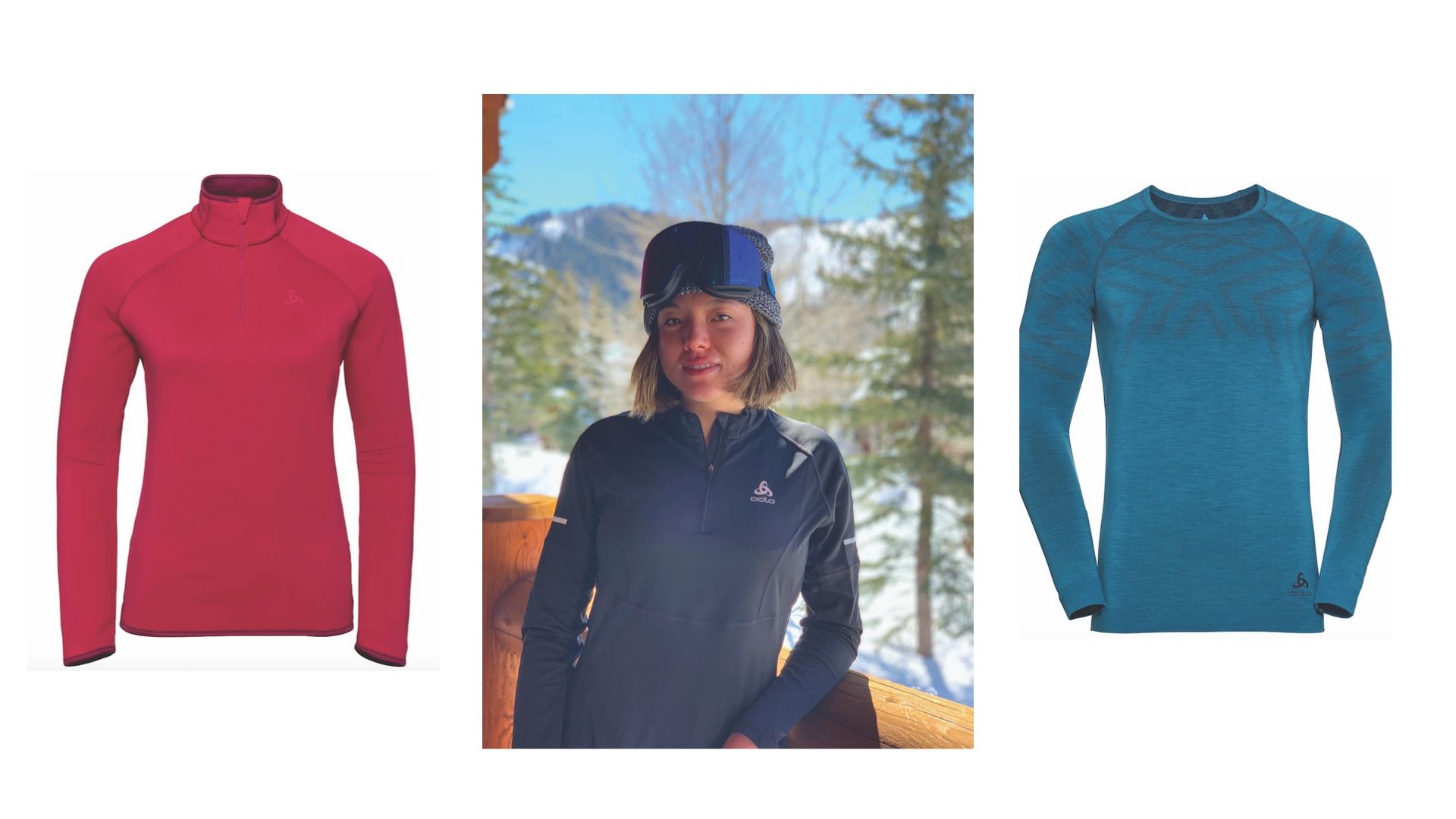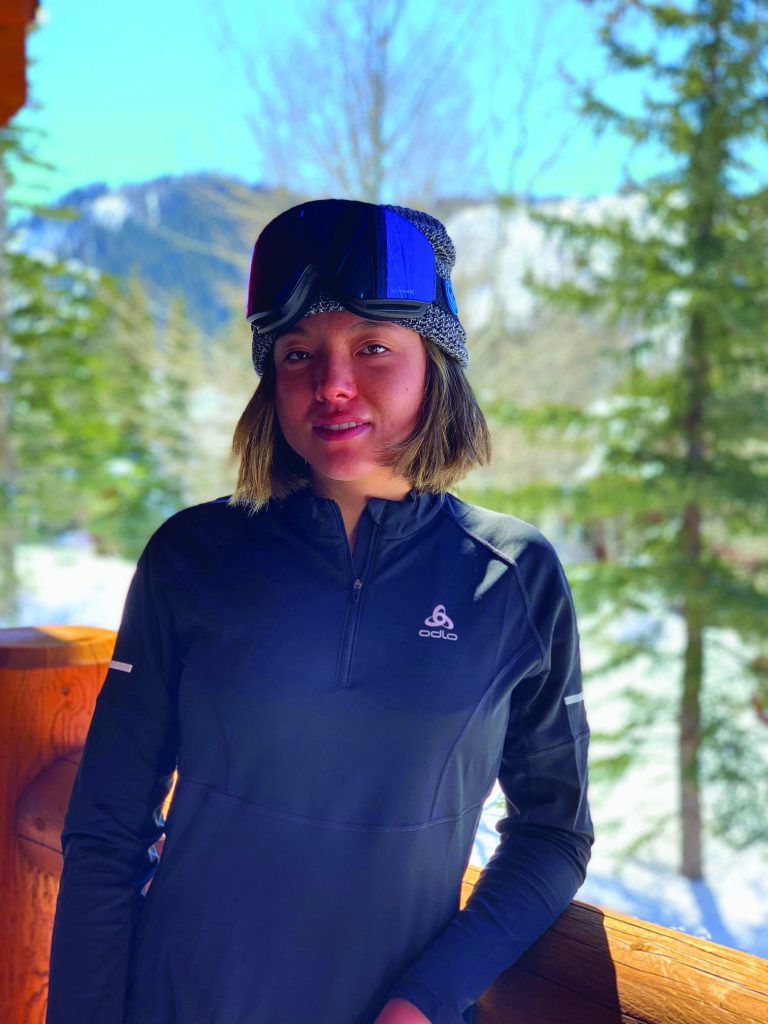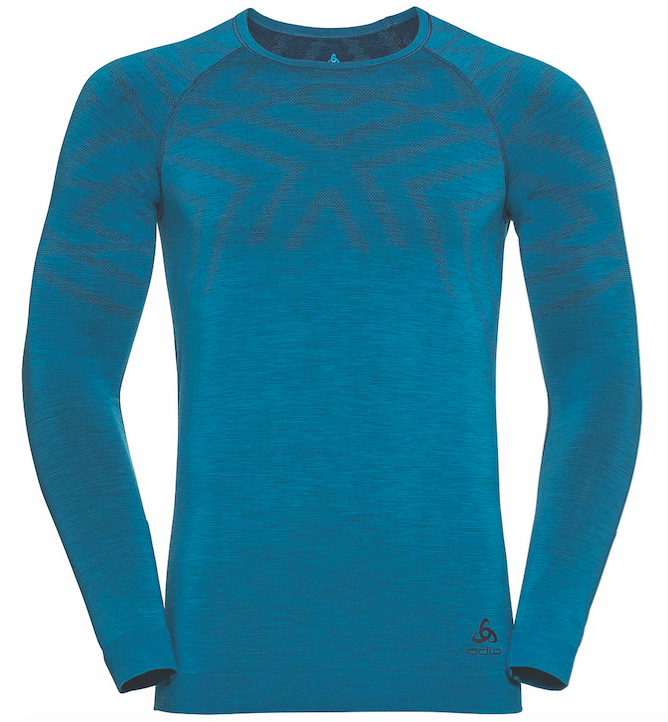Expert layering tips from pro skier Izzy Atkin

Slopestyle athlete Izzy Atkin, an ambassador for Odlo and Britain’s first Olympic medallist in skiing, gives her top tips for picking baselayers and midlayers.
LAYERING EXPLAINED
How you layer up for skiing is a matter of personal preference in terms of materials, weights and styles. The rule of thumb is that as long as you pick efficient and compatible garments, you should only need three layers – a baselayer, a midlayer and an outer layer (jacket or shell) – no matter what the weather throws at you.
The biggest mistake active people make – in lots of sports – is to put on too many layers and find they are soaked in sweat as soon as they put in some effort.
BASELAYERS
So, what technologies and choices are available today to skiers of varying tastes and levels of performance, to ensure they strike the right balance out on the hill between weather protection, temperature control and moisture management?
First up, there’s a choice between synthetic and natural fibres, or a blend of both.
- For dynamic and energetic skiers, I’d recommend synthetic fibres in a baselayer as they offer maximum transfer of humidity, maximum breathability and a next-to-skin sensation that totally fits your body.
- Cruisier types can opt for 100% polyester, which is soft on the skin and warm.
- But if your bag is high-intensity, high-performance action – for instance if you’re cutting through crud, hiking to powder or lapping gates – the answer is a blend of polyester, polyamide and elastane, ideally with bodymapping.
- Bodymapping is a construction precisely adapted to the needs of an active body, with extra ventilation (usually in the form of tiny holes) in zones where you sweat more and extra insulation in zones that feel the cold. This varies between men’s and women’s anatomy – for example women feel the cold more in the lower back than men. Sweating is also an individual thing and some of us generate more moisture than others.
- Natural fibres such as merino don’t dry as fast as the best synthetics and are less breathable, but they have superb natural odour control. If you can’t wash your baselayers during a trip – for instance on tour – natural fibres are your best bet. However, synthetics aren’t far behind on this front: baselayer specialists treat polyester fibres with silver ions which inhibit the growth of bacteria, thereby considerably reducing stink.
MIDLAYERS
Midlayers are about temperature control as well as wicking sweat away from the baselayer so it can evaporate. Different materials and constructions vary in bulkiness and durability.
For instance G-Loft, a synthetic in Odlo’s ranges, combines great moisture management and high compressibility with excellent heat retention, whereas Ceramiwarm, whose yarn contains heat-reflecting ceramic particles, provides up to 3C extra heat and is super-light.
Other brands have their own formulas for synthetics – Helly Hansen’s Lifaloft or Patagonia’s Plumafill for instance.
And while down and merino remain the most-used natural insulation across the brands, one innovation this winter is the introduction of yak wool to Odlo midlayers and jackets. This hollow-fibred wool has evolved to be 40% warmer than merino, 66% more breathable and dries 17% faster – no wonder, as yaks live in the Himalayas at 5000m altitude, happily existing in temperatures down to minus-40C.
MY PERSONAL PREFERENCE
So what will I be wearing out on the hill this winter? Well, I feel the cold a little (though I move around too much to wear yak during training, even in the US).
My go-to baselayer is the Blackcomb, my midlayer will be the S-Thermic and I won’t be without my trusty Muscle Force socks, which are a synthetic/wool blend.
But what I’m most excited about is the new I-Thermic mid, which has heating cables knitted in, controlled via an app (yes, really!).







